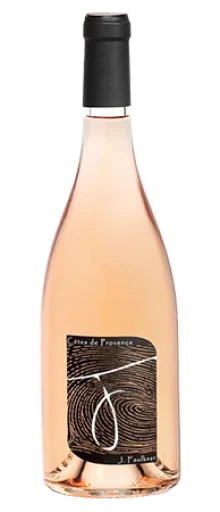
Julian Faulkner has been championing serious fine ageable rosé since he launched his cuvée Nectar in 2001 that got renamed Aurelia (his first-born) in 2015, both under Le Grand Cros, his estate label. Julian launched his Jules brand to offer great affordable wines driven by his belief that inexpensive wines needn’t be dumbed-down wines. The JF project draws from both convictions. It is a serious ageable rosé from selected plots on Le Grand Cros vineyards. Yet he wanted to achieve a more accessible price point. Certain processes have been tweaked to trim down costs.
Côte de Provence
Rosé

Grape Varieties
47% grenache, 26% syrah, 13% cabernet, 6% sémillon, 5% rolle, 3% cinsault
Farming
Le Grand Cros has sustainable certification (HVE3) since 2018 (Terra Vitis from 2001) and each year we look to experiment and implement avenues of progress in terms of our environmental impact and quality. Our vineyards are not irrigated so a particular focus has been to adapt to climate change. We have permanent cover crops on all our vineyards that are crimped once they reach a certain height creating a dry vegetative carpet that keeps the soil cooler and slows water evaporation from the soil amongst all the other ecological benefits.
Press
Tamlyn Currin JancisRobinson.com – 17
The first thing I noticed about this wine was the texture. It’s like rumpled silk. It’s dry, of course, but there seems to be an incipient, fragrant sweetness – like cherry blossom. It tastes of an early-picked Cox Pippin apple, with earthly, almondy undertones, a drift of white pepper, and the finish is impertinently crisp. It’s a thoughtful, complex rosé. Drink 2024-2027
Climat
The winter 22/23 was quite mild with little precipitation however a little rainfall towards the end set the vegetative cycle off at a sustained pace. Unfortunately, the spring proved to be complicated, the succession of rains and the lack of wind forced us to be vigilant and to do everything possible to save the 2023 harvest. At the end of June, a first heatwave reminded us that nothing is a foregone conclusion. The vegetation had to draw on its reserves very early in the summer season. July offered some respite as it wasn’t so hot but at the end of the month after veraison we were hit by a second heat wave that challenged our vineyards. Fortunately, our terroir, which is cooler and later than the coast and the centre of the Var, regulated the ripening. Our acidity was not burned in the grapes and our sugar levels remained close to the mean. After some fortunate localised rainfall, the ripening of the Cinsault plots were turbocharged which had to be harvested back to back in a short intensive window. In the end, despite a slightly less acidic sensation due to a lack of malic acid, the result is a freshness coated by a fleshiness that was preserved at the vine. Indeed, we did not suffer a concentration effect of the acids and/or phenolics, so we were able to preserve our signature style, very fine, all in lace and always with a length and a very light and slightly juicy finish.
Tasting Notes
The dress is a bright light yellow with beautiful silvery nuances. The nose is delicate and complex with floral and quince notes. In the mouth, we find this aromatic complexity. Persistence on the fruit, with beautiful salivating bitterness. Nice balance.

